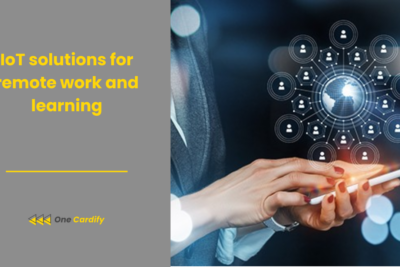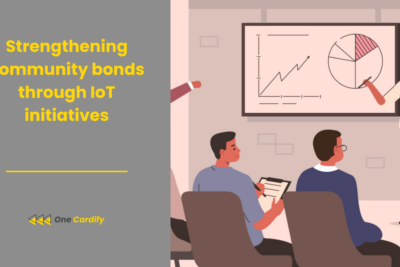
Smart grids: IoT for efficient energy distribution
Investigating the disruptive crossing of smart grids and the Internet of Things (IoT) reveals a vision of an effective energy distribution tomorrow. This synergy assures not only improved energy management but also a sustainable way to provide for the increasing global energy need.The advent of IoT technology allows smart grids to revolutionize the distribution, monitoring, and preservation of electrical energy, ushering in an eco-friendly and resilient energy landscape.This sophisticated network empowers not only the supplier, but also the consumers to have unprecedented control over the usage of electricity, promoting an era of energy awareness and accountability.
Introduction to Smart Grids and IoT
IoT technology powered smart grids embody a revolution in the distribution of electricity. These smart networks are implemented with sophisticated sensors, meters, and devices, connected via the internet, providing instant communication between utilities and customers.Such integration allows the bi-directional flow of data and energy, which makes energy distribution and consumption to be maximally efficient. Smart grids represent the future of energy control, providing a flexible and proactive method for modern energy issues.IoT wide coverage makes smart grids able to anticipate and respond to energy needs of single homes to whole communities, and therefore, ensuring reliability and waste-free energy consumption.
Related content
Benefits of Smart Grids in Energy Distribution
One of the most visible advantages of smart grids is their potential to reduce energy wastage and to reduce energy costs for consumers. Having real-time information on energy consumption enables consumers to adjust their behavior so as to save on bills and further reduce their carbon footprint.In addition, smart grids promote reliability in energy service by quickly detecting and resolving problems within the grid. This leads to less outages and a consistent supply of energy.The smart grids significantly promote the usage of the renewable sources of energy from the environmental point of view. They can effectively incorporate solar and wind power into the everyday energy mix, drawing us nearer to a sustainable energy future.
Challenges and Solutions
While both smart grids and IoT have their benefits, issues exist when it comes to their use in the distribution of energy. Security is the main issue; in particular, data privacy and the vulnerability of systems.In addressing these, strong cybersecurity measures are being added to ensure that the grid and its data are protected from malicious attacks.Additionally, the initial high expenditure of the smart grid technology is another issue. Nevertheless, with the help of government aids and improving technology that reduce the costs, these smart systems are getting closer.
The Role of Consumers
Consumers are pivotal in smart grids’ efficiency. They can access their energy consumption information real-time via interactive dashboards and mobile applications, giving them the power to make better decisions regarding their energy consumption habits.In addition, education programs and projects are also important for creating a society of energy-aware consumers, which is necessary for the long-term success of smart grids.
Future of Smart Energy Distribution
The prospect of energy distribution with the help of smart grids and IoT is therefore, very promising. They not only guarantee an energy world that is more efficient and trustworthy but also allow for new applications where smart homes and smart cities make the people at the centre of the daily lives more revolutionary.With the development of technology, the combination of AI and machine learning can improve the forecasting abilities of the smart grids, thus enabling them to be more adaptive to the requirements of both the providers and consumers.
Conclusion
IoT technology driven smart grids are fundamental innovations for effective energy distribution. They provide a flexible, efficient and green solution to contemporary energy problems and take us towards an environmentally friendly future.By adopting this technology, we are not only reducing our energy consumption but we are also making an important leap in our way to being a sustainable and environmentally responsible company.
Smart grids are electricity networks that use digital technology to monitor and manage the transport of electricity from all generation sources to meet the varying electricity demands of end users.
IoT devices enable real-time data collection and communication between consumers and energy providers, enhancing efficiency, reliability, and sustainability in energy distribution.
Reduced energy waste, cost savings for consumers, enhanced reliability of energy supply, and increased integration of renewable energy sources.
The main challenges include security concerns, the high initial cost of implementation, and the need for consumer engagement and understanding.
By monitoring and adjusting their energy usage with the help of IoT devices and mobile applications, and participating in energy conservation programs.
The future includes enhanced integration of renewable resources, development of smart homes and cities, and the application of AI for improved efficiency and responsiveness.
They reduce energy waste and facilitate a higher integration of renewable energy sources, contributing to lower carbon emissions and a sustainable energy future.
Conclusion
With the help of smart grid and IoT (Internet of Things) technologies we know and building, we not only improve today’s energy distribution systems but also lay a foundation for the future, which is to be sustainable and efficient. The many advantages that these technologies offer to consumers and the environment emphasize the need to embrace smart energy solutions in our quest for energy optimization and sustainability.The innovation opportunity in this field is tremendous, implying a future that smart energy solutions take a lead in environmental protection and energy conservation. The more we research and use these technologies, the closer we get to the ideal of a smarter, more clever, and sustainable energy future.Adopting smart grids is a commitment to the future, innovation, sustainability, and a better life for generations.






Related Posts